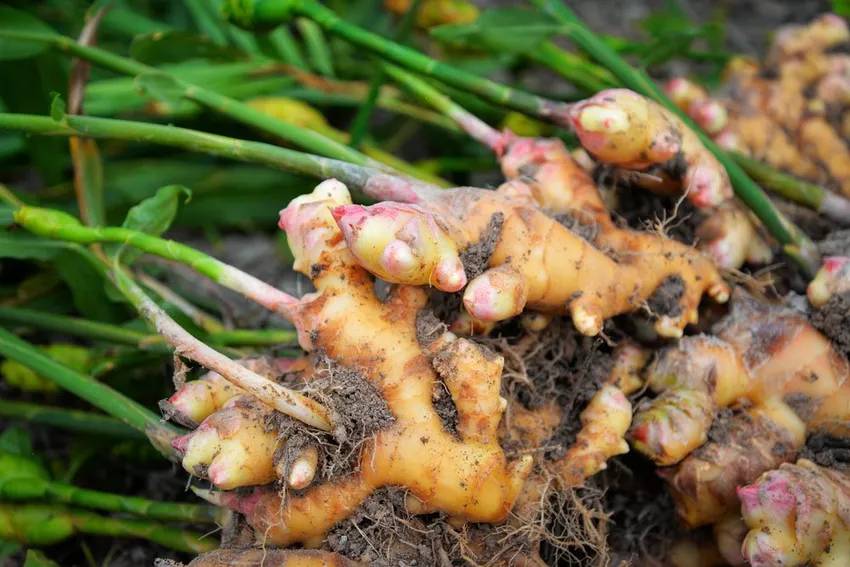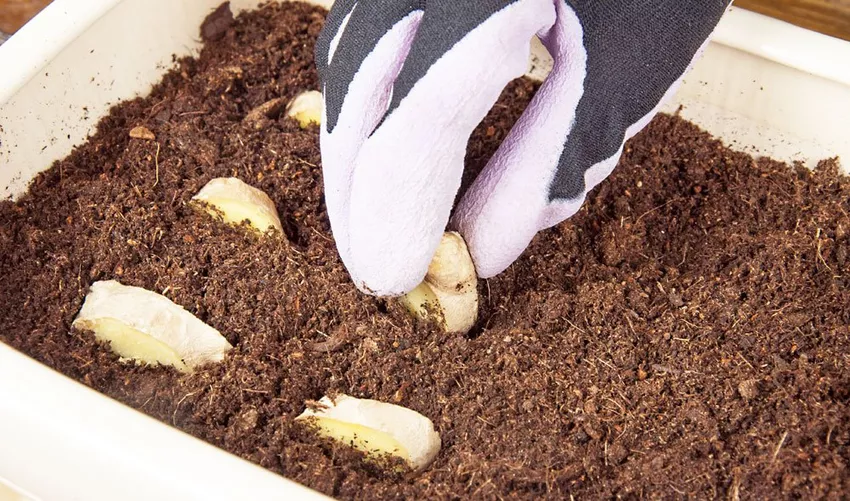If you want to plant ginger, you only need a few accessories. All you need is a little patience when growing ginger, with our instructions you can do it!

Where and how does ginger grow?
Ginger (Zingiber officinale) is known to us as an extremely digestible and, above all, he althy tuber. You can buy fresh root vegetables in any well-stocked supermarket these days, but they are also offered as a tea or as a dried spice.
Ginger was already known in Germany in the 9th century, but the main growing area is still the tropics, with countries such as Sri Lanka, India, Indonesia, but also Australia, France and Nigeria. The herbaceous plant can grow up to 150cm high. Even if the leaves and thick stems have an imposing appearance, the bulb is the most interesting thing about ginger. The finger-like rhizomes are ultimately what are used for consumption and medicine.
If you want to have ginger roots available on a regular basis, then you should try and plant ginger yourself. Cultivation in pots or tubs is possible without further ado.
How can I grow ginger myself?
Ginger root is best planted in early spring - from February/March.
If you want to grow ginger, you need 4 main components:
- (at least) a piece of fresh organic ginger
- a pot or bucket
- Cultivation soil
- Cling film or transparent plastic bag
Planting ginger - step by step instructions
- Cut a piece of ginger (approx. 5cm) from a fresh root. It is important that this piece contains sufficient vegetation nodes. These knobbly outgrowths are important for the zingiber to germinate later.
- Put the cut piece of ginger in lukewarm water (preferably overnight).
- The next day, fill a plant pot with nutrient-rich potting soil and insert the piece of ginger with the cut side down.
- Now the tuber is only minimally covered with soil (approx. 2cm) and everything is slightly moistened.
- In order for the ginger root to germinate well, cover the pot with a transparent plastic cover under whichenough humidity can form.
- Water regularly, but avoid waterlogging!

The best location:
Place the seedling in a place that is as warm as possible - at least 20 degrees room temperature, but without direct sunlight.
Now you have to be patient, because the first sprout will only form after a few weeks. But then the time has come to remove the plastic bag, repot the sprout and place the ginger pot in a very, very sunny spot.
Plant ginger and don't forget to care for it
To ensure that the plant thrives, you should water it with water that is as lime-free as possible (e.g. rainwater). It is essential to avoid waterlogging. You should fertilize the ginger once or twice during the growth phase.
» Tip: You can always place your ginger plant in a sunny greenhouse with high humidity.
Harvest ginger - when?
After planting comes the most beautiful part, because in autumn (approx. October) the harvest time has come. This can be recognized by the yellowing of the plant leaves - you can now pull the ginger root out of the ground. The self-grown ginger can be processed directly or dried. Ginger has many uses in the kitchen, for example:
- grated to refine soups
- in a refreshing ginger smoothie
- as ginger syrup or pickled sweet and sour (gari)
Keep vegetation break
After harvesting, the ginger root needs a vegetation break. This means that you first dry off part of the tuber (simply cut off the harvested root) that is to sprout again next spring. To do this, you should no longer water the root section during the winter months and overwinter in a dark, cool room at a maximum of 10 degrees.
What is so he althy about ginger?
Growing ginger takes little effort and is definitely worth it if you value a he althy diet. Zingiber officinale is high in vitamin C, magnesium, iron, calcium, potassium, sodium and phosphorus. The spiciness it contains stimulates the blood flow and thus the circulatory system. Ginger is also indispensable as a remedy because of its he althy essential oils.